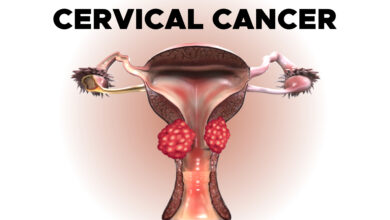
Pre-Cancers of The Cervix
Cervical cancer begins when healthy cells on the surface of the cervix change or get infected with human papillomavirus (HPV) and grow out of control, forming a mass called a tumor. Long-term infection of HPV on the cervix can result in cancer, leading to a mass or tumor on the cervix.
A tumor can be cancerous or benign. A cancerous tumor is malignant, meaning it can spread to other parts of the body. A benign tumor means the tumor will not spread.
At first, the changes in a cell are abnormal, not cancerous, and are sometimes called “atypical cells.” Researchers believe that some of these abnormal changes are the first step in a series of slow changes that can lead to cancer.
Some of the atypical cells go away without treatment, but others can become cancerous. This phase of the precancerous disease is called cervical dysplasia, which is an abnormal growth of cells. Sometimes, the dysplasia tissue needs to be removed to stop cancer from developing.

Often, the dysplasia tissue can be removed or destroyed without harming healthy tissue, but in some cases, a hysterectomy is needed to prevent cervical cancer. A hysterectomy is the removal of the uterus and cervix.
Treatment of a lesion, which is a precancerous area, depends on the following factors:
- Size of the lesion and the type of changes that have occurred in the cells
- The desire to have children in the future
- Age
- General health
- Preferences of the patient and the doctor
If the precancerous cells change into cancer cells and spread deeper into the cervix or to other tissues and organs, then the disease is called cervical cancer or invasive cervical cancer.
